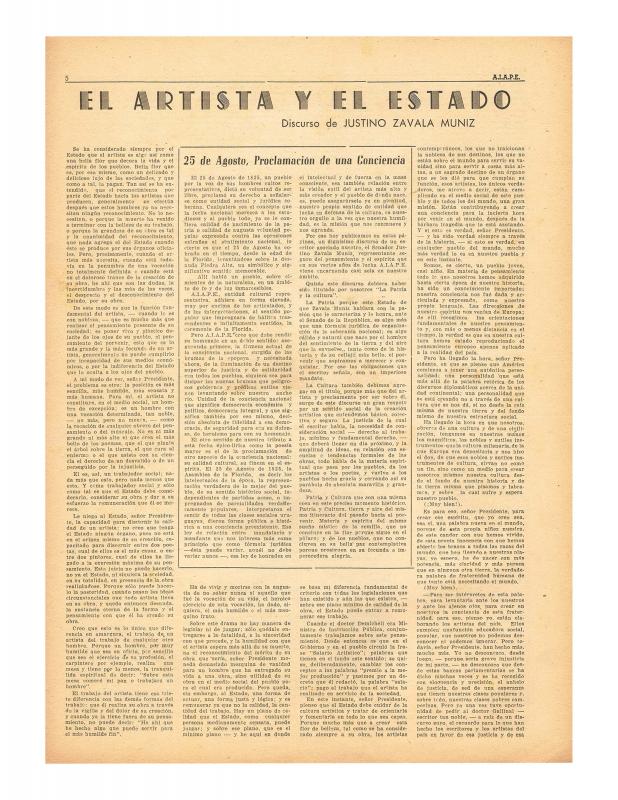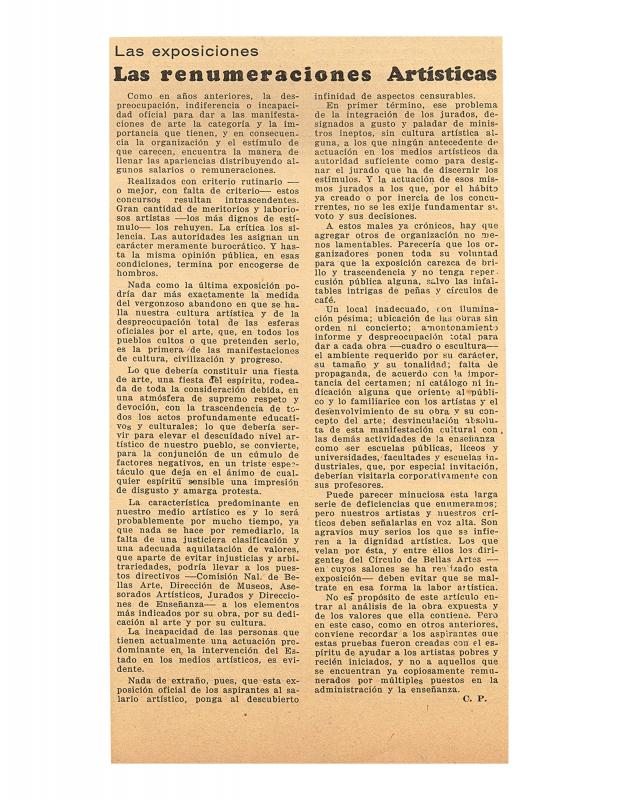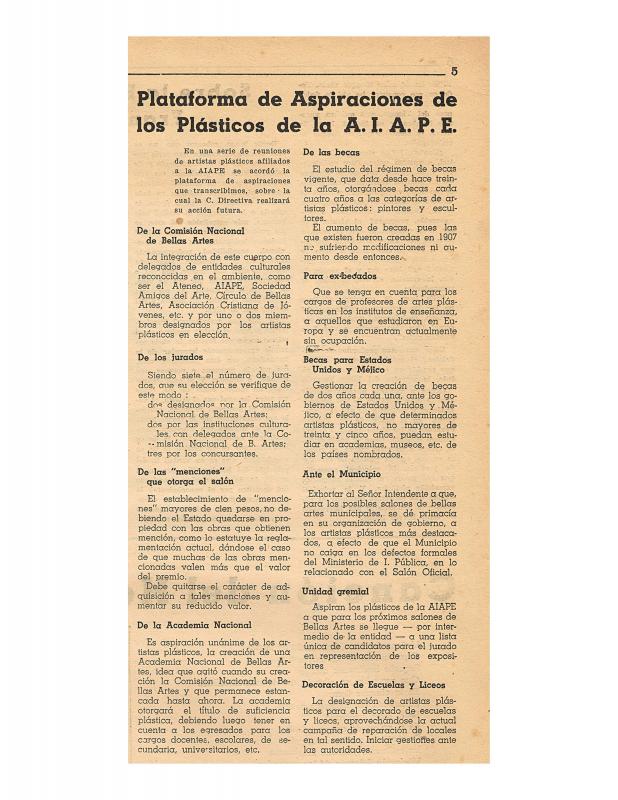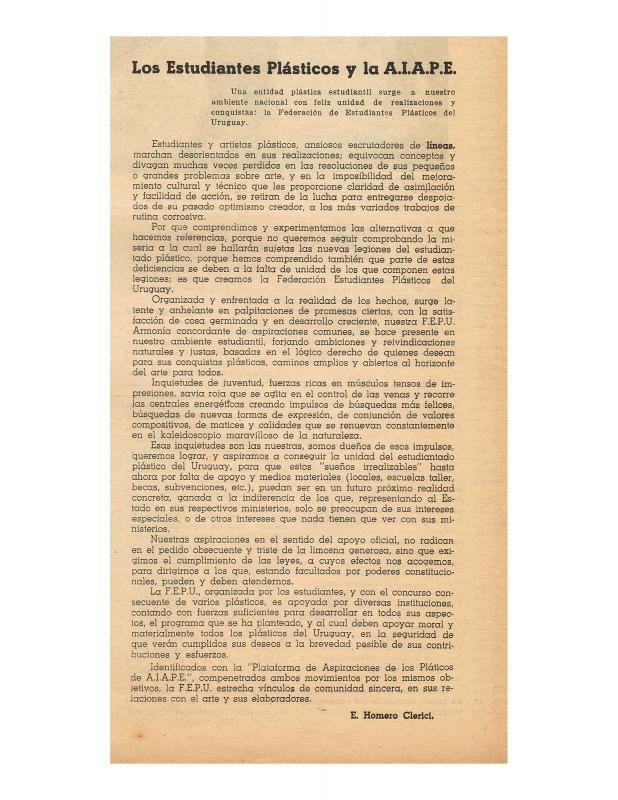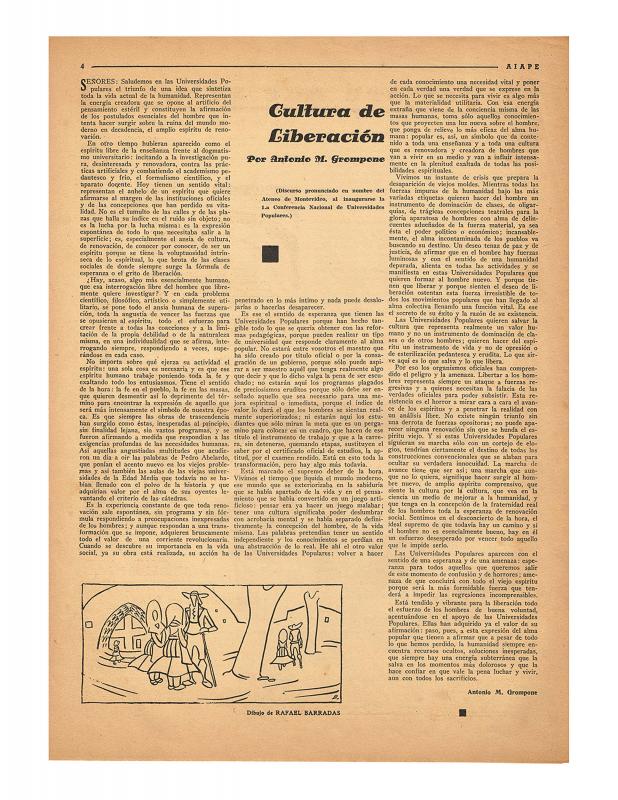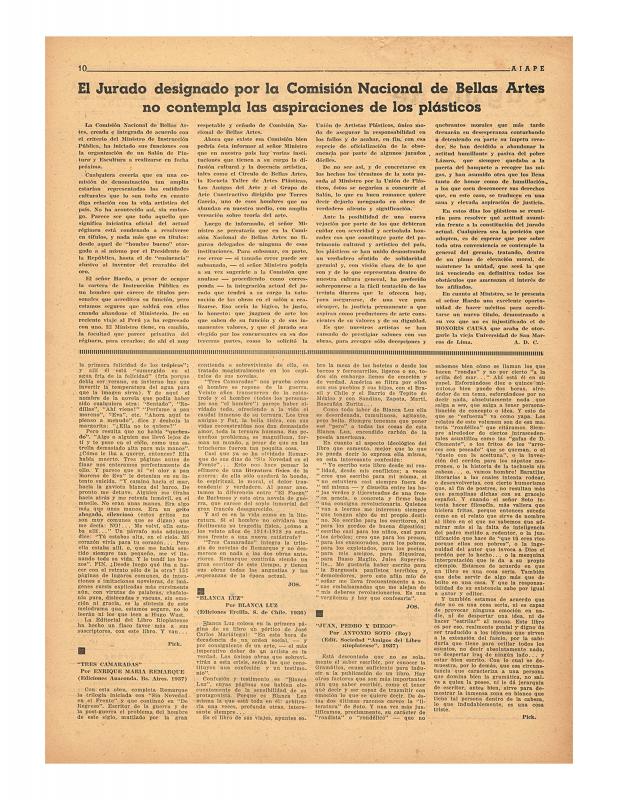Intellectuals found new ways to get involved in politics in a society that was increasingly polarized by the emergence of workers’ and peasants’ movements in Latin America in the early twentieth century. In response to the rising threat of unchecked fascism, many intellectuals embraced cultural and political practices they felt could offer resistance to that threat in the many different circumstances that existed in Latin American countries. A regional network of thinkers was established; the goal of the AIAPE (Agrupación de Intelectuales, Artistas, Periodistas y Escritores)—which was originally formed in Argentina in 1935 at the urging of Aníbal Ponce (1898–1938)—was to combat the cultural decline caused by conservative and pro-fascist policies. The effort begun in Argentina spread to bordering countries (Uruguay, Chile, Brazil, Paraguay, and Bolivia) where groups operated in different circumstances but with similar goals, supported by regional Communist Parties, seeking to align themselves with the USSR. In Uruguay, many local intellectuals joined the AIAPE in response to the authoritarian measures imposed on the country by the dictatorial Gabriel Terra regime that was installed by the 1933 coup d’état. In Chile, a political crisis rocked the country in the 1940s. After the poet Pablo Neruda returned from Paris in 1937, the anti-fascist group AI (Alianza de Intelectuales) was formed. The AI was led by Neruda, who was joined by Oreste Plath, Pepita Turina, Juvencio Valle, Andrés Sabella, Hernán del Solar, Julio Barrenechea, and members of the Sociedad de Escritores de Chile (Alberto Romero and Ángel Cruchaga Santa María). Another important Latin American cultural group that should be mentioned consisted of Brazilian anti-fascist intellectuals who were living in exile in Argentina, led by the writer Jorge Amado (1912–2001). The intellectual association in Paraguay was also supported by local communists during the revolutionary period that followed the Chaco War, after which the leaders of the Paraguayan Communist Party were exiled to Buenos Aires. That leadership was headed by Oscar Creydt, a revolutionary who wrote for the anti-fascist publications Unidad and Nueva Gaceta and organized military attacks against the Paraguayan dictators. This document is important because it mentions an indigenist movement that did not exist in the other countries in the region; that is, the AIAPE in Bolivia stood up for Native American culture in support of the Americanist cause. [As complementary reading see, in the ICAA digital archive, the following articles published in AIAPE: by Joaquín Torres García, “La exposición. [Amigos de España]” (doc. no. 1191197), “El Arte de Arzádum” (doc. no. 1223148), and “El arte de David Alfaro Siqueiros” (doc. no. 1238628); by Cipriano S. Vitureira, “1er Salón Municipal de Artes Plásticas/Su contenido artístico” (doc. no. 1184568), and “La pintura de Miguel Ángel Pareja” (doc. no. 1223795). See also: by Justino Zavala Muniz, “El artista y el Estado” (doc. no. 1216580); “Arte simple,” by Atahualpa del Cioppo (doc. no. 1223119); by Carmelo de Arzadum, “Las artes plásticas de 1936 a 1939” (doc. no. 1224706), and “Urruchúa (doc. no. 1224405); by Roberto Ibáñez (editor in chief), “Demetrio Urruchúa con Nosotros” (doc. no. 1223661), “Las exposiciones. Las remuneraciones artísticas” (doc. no. 1225449), “Los jurados del próximo Salón Nacional de Bellas Artes” (doc. no. 1225548), “Michelena- Escultor” (doc. no. 1223386), and “Plataforma de aspiraciones de los plásticos de la A.I.A.P.E.” (doc. no. 1225398); by Homero Clerici, “Los estudiantes plásticos y la AIAPE [Agrupación de Intelectuales, Artistas, Periodistas, y Escritores]” (doc. no. 1225286); by Felipe Novoa “El grabador Carlos González” (doc. no. 1223870); by Gisleno Aguirre, “La nueva Asociación de Artistas Plásticos” (doc. no. 1225166); by Orestes Baroffio, “Objeto y Significación de Un Salón de Arte” (doc. no. 1210990); and by C.L., “Teseo: los problemas del arte” (doc. no. 1223765). There are also many anonymous articles that were published in AIAPE: “Temas de discusión sobre la cultura Americana” (doc. no. 1225812); “La actividad plástica del año” (doc. no. 1223617); “El arte mejicano” (doc. no. 1225519); “Bases A.I.A.P.E (Agrupación de Intelectuales, Artistas, Periodistas y Escritores)” (doc. no. 1226697); “Cae decorado de Berni bajo la piqueta del G.O.U” (doc. no. 1225213); “Cultura de liberación” (doc. no. 1226424); “Cultura en el orden internacional” (doc. no. 1223996); “La ética social del artista,” unformatted (doc. no. 1223962); “La exposición del Subte a beneficio de Chile,” unformatted (doc. no. 1225245); “Fuera del Salón Oficial” (doc. no. 1221528); “El jurado designado por la Comisión Nacional de Bellas Artes no contempla las aspiraciones de los plásticos” (doc. no. 1225373); “Los jurados de los salarios artísticos de 1935 atentó contra la cultura” (doc. no. 1225596); “La libertad en Portinari” (doc. no. 1225346); “El mensaje de Antonio Berni” (doc. no. 1223596); “Notas editoriales e informativas” (doc. no. 1226398); “Noticia de David Alfaro Siqueiros” (doc. no. 1223640); “Una opinión sobre el 6° Salón Nacional” (doc. no. 1225722); “Optimismo sobre España” (doc. no. 1225185); “Página de crítica y polémica. Las exposiciones” (doc. no. 1221503); “La pintura en el V Salón de Otoño” (doc. no. 1225672); “Reconocimiento a Élie Faure” (doc. no. 1223458); “VIII Salón Nacional de Bellas Artes” (doc. no. 1211227); and “Sobre la querella del realismo” (doc. no. 1225636)].






